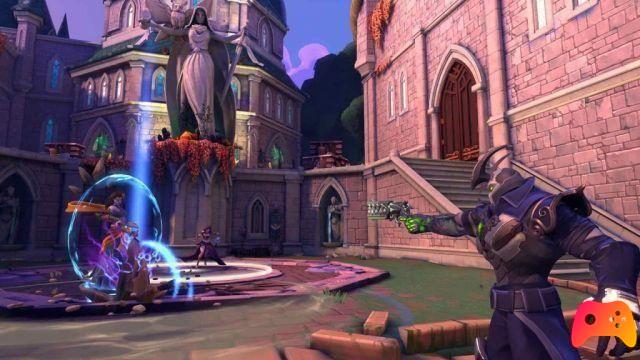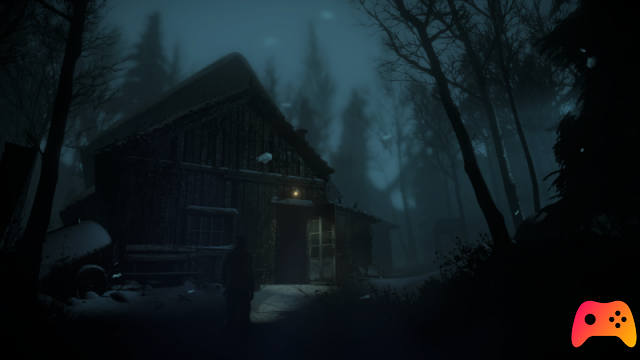
Until Dawn, literally "until dawn": the eight protagonists of the horror adventure developed by Supermassive Games exclusively for Playstation 4 will have to survive, whose release date is set for August 26, 2015. Initially designed to be played on Playstation 3 with the help of Move, the development of Until Dawn continued until finally landing on Playstation 4: thanks to a plot that saw the collaboration of directors Graham Reznick and Larry Fessenden, the videogame product of Supermassive Games promises an experience in the balance between the videogame and the interactive film, in the footsteps of the latest works by Quantic Dream. During this review it will be impossible not to mention the now historical Heavy Rain and Beyond: Two Souls, as well as you will read many comparisons with the world of cinema. This is not so much to make mere comparisons but rather to highlight in what Until Dawn it struck us and why, we tell you right away, in our opinion it deserves the podium on a par with the adventures created by David Cage.
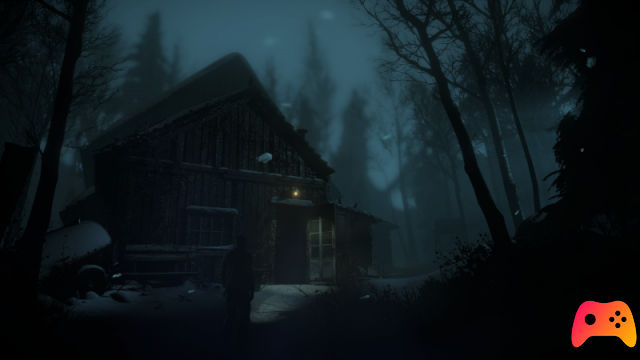
The most classic of teen-horror
One of the qualities we most appreciated in Until Dawn it was his ability to make the most banal of plots interesting: the eight protagonists meet, as every year, for a weekend of fun in a remote mountain chalet. Obviously, the boys will soon discover that they are not alone and will find themselves forced to fight by any means to survive the dangers of the night and allow the rescue that will arrive at dawn to rescue them.
More in detail, for the eight friends it is a particular anniversary: the previous year, in fact, in the same chalet, a horrible tragedy had taken place that had led to the death of Beth and Hanna Washignton. The two girls, along with their brother Josh, are the daughters of the wealthy Hollywood producer who owns the chalet and, together with it, the entire Blackwood mountain on which the adventure takes place. It is Josh who contacts his friends and asks them to reunite once again like in the old days: the intention is to get drunk, celebrate and have fun all weekend, also and above all in memory of the missing friends.
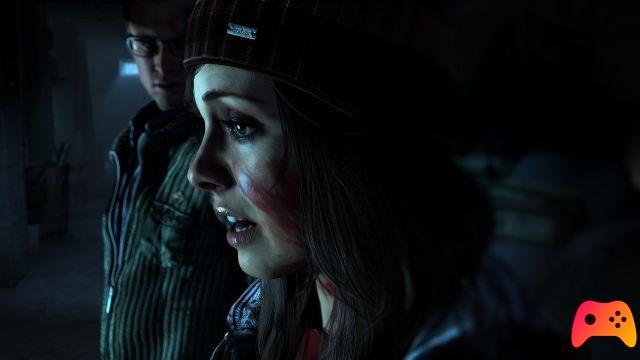
At the request of Sony itself, we can't go into the details of the plot too much, but you will already understand why we like the teen-horror cliché so much: during the adventure we finally found ourselves in front of a Friday the 13-style plot updated to date, perfectly capable of mixing the charm of '80s horror with the rhythms, the tight narrative and the twists and turns of the most modern horror cinema, with more splatter moments like Saw and scenes of tension like in Ouja. The eight protagonists perfectly embody the classic stereotypes of the genre: there are the brave gym man, his pedantic ex-girlfriend with the new boyfriend, the classmates in love but who do not dare to declare themselves to each other, the dark and the jester of the company. The cinephiles among you try to think of the characters of IT, of Scream or, why not, in a caricature of the Goonies: the charisma and empathic abilities of the characters of Until Dawn they are exactly the same and it is thanks to them that the adventure literally sticks to the screen for all the ten hours necessary to bring it to completion, which are exactly the hours that separate the arrival of the boys at the hut from the sunrise.

Between interactivity and passivity
Given the particularity of the gameplay, the plot of Until Dawn it is obviously not linear: imagine watching an interactive film, from time to time in the role of one of the protagonists; for each of them the game will call you to intervene by choosing the answer to give in certain dialogues, the direction to take or the action to take. The leitmotif of the narrative is the Butterfly Effect, the so-called butterfly effect according to which every smallest and most insignificant action is able to change the future, also generating upheavals that can determine the life or death of people. The butterfly effect is cleverly inserted into the game through the citation of some Indian legends, according to which butterflies of different colors are able to represent more or less benign omens of the future: in the game world there are scattered small totems that, once collected by the various characters, show confusing scenes of a possible future, to be taken into consideration if you want to complete the adventure by saving all the characters. In a horror context, think about how arguing with a friend who will not accompany you in your exploration, leaving a door open or putting a pair of scissors in your pocket can make the difference between life and death, and it will immediately become clear to you how many branches in front of you will be able to originate as many alternative scenes and endings.
As we said at the beginning, it is inevitable to compare the work of Supermassive Games with that of Quantic Dream, which has been developing interactive adventures of this type since Indigo Prophecy. As far as we are concerned, Heavy Rain still remains one of the most important cornerstones of this genre, if only for its ability to make the player grow fond of the protagonist until he experiences the feelings of the characters like very few other video games have been able to do. Nonetheless, the works of Quantic Dream presented a sometimes incomplete plot that, based on the choices made by the player, left behind obscure points or linked with little coherence the various scenes that led to one of the possible endings. We also had this feeling in Until Dawn, but only in a few moments: we must in fact admit that we have found ourselves faced with a solid and at the same time malleable plot, where even the smallest decision is taken into account in the dialogues and in the scenes that follow one another. The choices to be made are always clear, except for a couple of points where you could lead one of the characters to death unwittingly, convinced that your choice will lead him to perform an action different from the one you actually witness. Even this component is still part of the game and will push you to replay the chapter to take a different path and thus save - or try to save, who knows - the life of those you have previously sentenced to death. To tell the truth in a second game you realize that despite the many crossroads the story cannot be that much upset, but the genius of the developers and writers lies in making you believe that perhaps, if you had made another choice, things would have turned out differently. A bit like it would happen in real life, especially as regards the choices to be made quickly because they are in danger. Finally, sometimes, a feature that has made us jump on the chair on more than one occasion, there is also the possibility of taking a third way simply by doing nothing and letting the available time run out without making any choice: this is perhaps the most fascinating part of Until Dawn, which offers a range of choices equal to those you would have in reality.
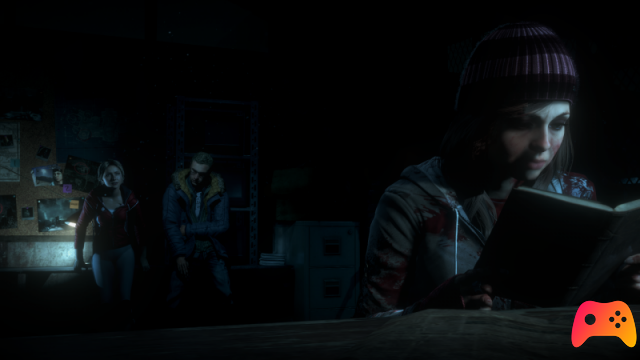
At this point, we still have to warn you that the gameplay of Until Dawn it is entirely composed of exploration and choice. Compared to Heavy Rain or the more recent Beyond - in which interactivity was more marked thanks to the chapter in the war zone and the presence of the ghost to be commanded to move objects - in Until Dawn most of the action is limited to quick time events where you just need to press the right button with timing to avoid the death of the character. Supermassive Games has seen fit to also include some shootings and sections with firearms, but even in these you just need to move the viewfinder and press the trigger with the right timing to get away without too many problems. We are ready to bet that the detractors will get married with this lack of real interactivity and, to be honest, we too would have appreciated a greater possibility of interacting with the environment around the player, at least in the exploration phases. That said, we feel like breaking a spear for Until Dawn, whose overall experience has however left us more than satisfied: the graphic adventure is a genre derived from point and click adventures and, if you like, from old text adventures or game books. Precisely for this reason we consider it wrong to compare Until Dawn to a survival horror, even talking about titles in which the survival component is stronger than the action one, such as in Memento or Clock Tower. It would be like comparing Super Mario Bros. 3 to Monkey Island and saying that the latter has gaps in the action component. If you embrace our thesis, you will understand well how we can place Until Dawn on the podium of interactive adventures; on the contrary, if you don't appreciate the genre and you haven't been conquered by Heavy Rain and Beyond, even the Supermassive Games game will tire you after a few minutes.
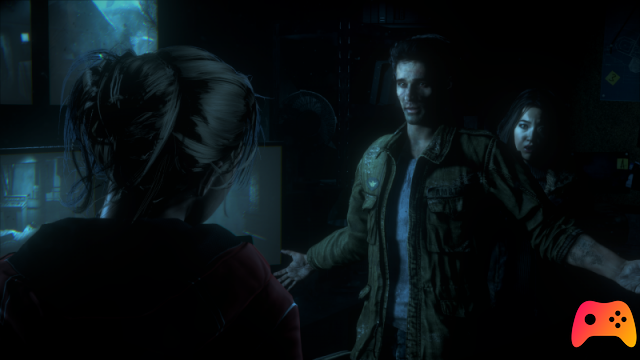
Motion capture by oscar
Since this is an almost perfect marriage between game and film, it is obvious that Until Dawn should show muscles under the graphic aspect. Let's start by saying that the cast - entirely made up of actors in flesh and blood who, digitized, acted splendidly like in a real movie thanks to the magic of motion capture - is very respectable: Sam (Hayden Panettiere), Mike (Brett Dalton), Josh (Rami Malek), Ashley (Galadriel Stineman), Chris (Noah Fleiss), Matt (Jordan Fisher), Emily (Nichole Bloom), and Jessica (Meaghan Martin), Beth and Hannah (Ella Lentini) are all names more or less known to TV series fans, as well as Peter Stormare, in the role of the psychologist with whom you will talk between one chapter and another of the game, has given the developers a truly Oscar-winning interpretation. Truly incredible is the meticulous attention paid to the creation of the faces that, both in the long shots and in the pause menu, in which you can rotate and admire the face of the character in use at that moment up close, pass through an enormous range of expressions. and emotions connected to them. In this respect we believe that the Playstation 4 hardware has been perfectly exploited and we would like to emphasize how the final result is really interesting.
The quality decreases slightly in the long shots outside the hut, where the Umbra 3 graphics engine does not particularly excel: if on the one hand the details around the protagonists and their animations are always excellent, looking up towards the horizon you can see a little too much fog and some less realistic scenarios. The choice to take Brett Dalton's physical characteristics to extremes to the point of making him almost identical to Uncharted's Nathan Drake is debatable: although the handsome actor lends himself perfectly to the more action phases dedicated to him and how much we enjoy playing in the shoes of an avatar similar to good old Nate, perhaps more could be done to characterize this character and make him more unique.
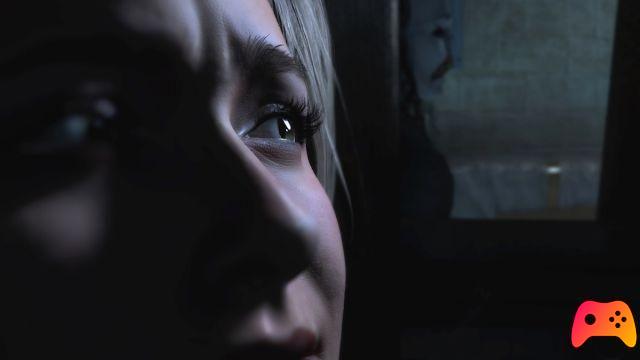
Finally, moving on to the sound sector, here too there are some details that would have deserved more attention: on the one hand we have a fantastic soundtrack curated by Jason Graves, author, among others, of the music of the recent The Order 1886; on the other, a localization in Spanish that combines perfect parts with more embarrassing moments. In this respect, Quantic Dream wins the game and once again remains a producer of the best localized titles we've ever experienced. In the case of Until Dawn it is clear how Supermassive Games has dubbed some scenes of the game 100% complete while others seem to be dubbed following the storyboard or in any case an unfinished version of the videos: the feeling is that the voice does not belong to the character, that in the face of a facial expression perfectly reproduced, it adopts an inappropriate tone of voice and a style of dialogue. These are rare moments in the ten hours of play, for the most part concentrated in the seventh chapter and, of course, it would be enough to play the title in English to eliminate the problem. However, we believe that such an inattention to localization can be overlooked in other genres but not in a game of this caliber that makes narration its only real strength. The fact remains that horror and interactive adventure, thanks to Until Dawn, are ready to arrive in style on Playstation 4 and, if the developers continue on this path, we can expect titles that corrected the small production defects will be called real masterpieces.
Until Dawn is the first truly deep interactive adventure available for next-generation consoles. Compared to Quantic Dream's previous attempts to make interactive films for consoles, the Supermassive Games game features a more cohesive plot and psychologically heavy choices, also thanks to the horror atmosphere that permeates the narrative fabric. Graphically, the Playstation 4 hardware does not make a good impression in the wide mountain landscapes, but it makes up for it with the interiors and with very detailed facial expressions. Too bad for the localization that loses a few hits here and there, a defect on which fans of the genre will surely be able to postpone while enjoying a title that we still recommend trying to all PS4 users.






